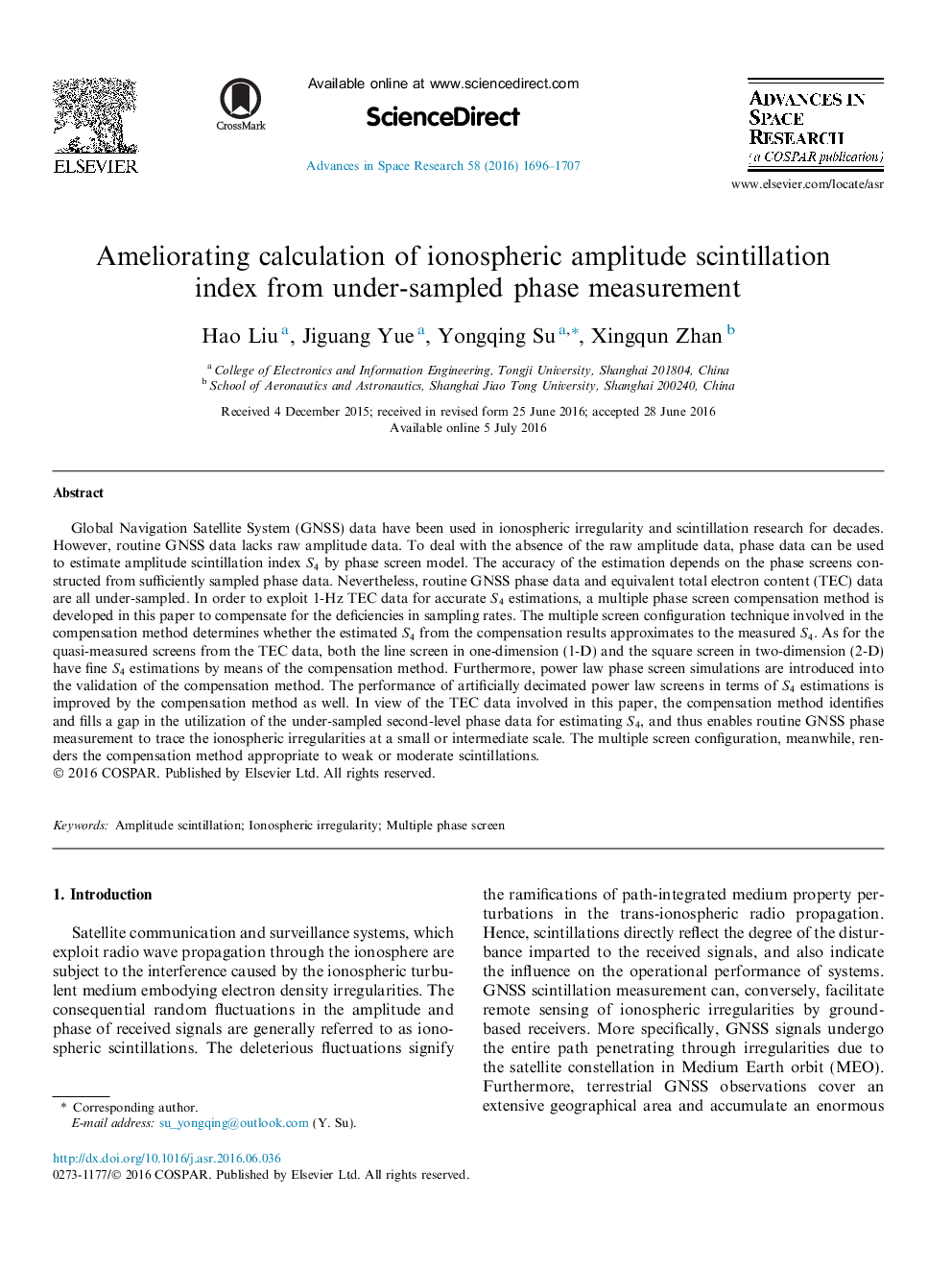| Article ID | Journal | Published Year | Pages | File Type |
|---|---|---|---|---|
| 5486603 | Advances in Space Research | 2016 | 12 Pages |
Abstract
Global Navigation Satellite System (GNSS) data have been used in ionospheric irregularity and scintillation research for decades. However, routine GNSS data lacks raw amplitude data. To deal with the absence of the raw amplitude data, phase data can be used to estimate amplitude scintillation index S4 by phase screen model. The accuracy of the estimation depends on the phase screens constructed from sufficiently sampled phase data. Nevertheless, routine GNSS phase data and equivalent total electron content (TEC) data are all under-sampled. In order to exploit 1-Hz TEC data for accurate S4 estimations, a multiple phase screen compensation method is developed in this paper to compensate for the deficiencies in sampling rates. The multiple screen configuration technique involved in the compensation method determines whether the estimated S4 from the compensation results approximates to the measured S4. As for the quasi-measured screens from the TEC data, both the line screen in one-dimension (1-D) and the square screen in two-dimension (2-D) have fine S4 estimations by means of the compensation method. Furthermore, power law phase screen simulations are introduced into the validation of the compensation method. The performance of artificially decimated power law screens in terms of S4 estimations is improved by the compensation method as well. In view of the TEC data involved in this paper, the compensation method identifies and fills a gap in the utilization of the under-sampled second-level phase data for estimating S4, and thus enables routine GNSS phase measurement to trace the ionospheric irregularities at a small or intermediate scale. The multiple screen configuration, meanwhile, renders the compensation method appropriate to weak or moderate scintillations.
Keywords
Related Topics
Physical Sciences and Engineering
Earth and Planetary Sciences
Space and Planetary Science
Authors
Hao Liu, Jiguang Yue, Yongqing Su, Xingqun Zhan,
